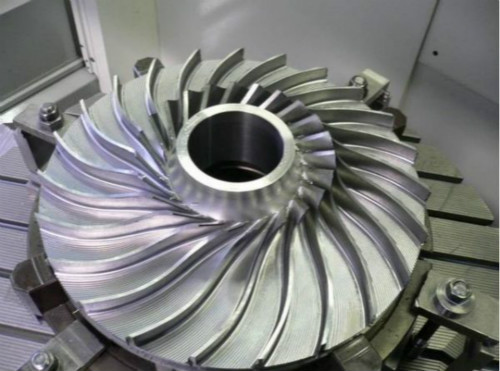GH738 is a nickel-based superalloy strengthened by γ'-phase precipitation. It has good gas corrosion resistance, high yield strength and fatigue performance, fair process plasticity and stable structure. It is widely used in rotating parts of aero-engines, and the operating temperature is not higher than 815℃. It can produce cold-rolled and hot-rolled plates, pipes, strips, wires and forgings, castings, and fasteners.
The main problem of GH738 alloy in the hot working process is the structure control of the hot working process. The core of thermal processing structure control is to systematically study alloy recrystallization kinetics, including dynamic recrystallization, static recrystallization and grain growth. At present, there are few studies on the recrystallization behavior and recrystallization kinetics of the alloy during deformation, and there are almost no structure control models used in actual engineering. The researchers used the Gleeble-1500D thermal simulation testing machine, combined with metallographic and electron microscopic analysis, to systematically study the dynamic recrystallization behavior of GH738 alloy under different deformation parameters. The research results have particular significance for the grain control of the alloy components in actual production.
The test material is the GH738 bar. The original bar is cut into a cylindrical sample of Φ8mm×12mm through the warp, used for heat simulation test. The raw materials' chemical composition (mass fraction, %) is: C0.040, Cr19.41, Co13.93, Mo4.26, Al1.43, Ti2.98, Fe0.56, and the rest is Ni.

The above samples were compressed and deformed on the Gleeble-1500D thermal processing simulation test machine. The deformation temperature is 1000, 1040, 1080, 1120, 1160℃; the deformation is 30%, 50%, 70%; the deformation rate is 1, 10s-1. During the deformation process, the control system automatically collects stress-strain data and uses Origin software to draw the stress-strain curve. After the deformation is completed, water-cooled, and NEWPORT Ⅱ metallurgical microscope to observe the sample deformation process's structure characteristics. The test results are as follows:
(1) When the GH738 alloy's deformation is small (30%), some of the grains are still elongated. When the deformation is more significant than 50% (deformation 50% and 70%), the grains are more uniform.
(2) The deformed structure of GH738 alloy is greatly affected by the amount of deformation. As the amount of deformation increases, the volume fraction of recrystallization increases, and the size of recrystallized grains decreases; as the deformation rate increases, the volume fraction of recrystallization decreases, and the grain size decreases; as the deformation temperature increases As it increases, the volume fraction of recrystallization increases and the grain size becomes more extensive.
(3) The nucleation mechanism of dynamic recrystallization of GH738 alloy is strain-induced nucleation. Grain boundaries bulge and nucleate, where the dislocation density difference is enormous. When the amount of strain increases, a necklace-like structure is formed in the plane range. The scope includes onion-like tissue.
TRUNNANO (aka. Luoyang Kmpass Nano Technology Co. Ltd.) is a trusted global chemical material supplier & manufacturer with over 12 years’ experience in providing super high quality chemicals and Nano materials. The 3D printing GH738 alloy powder produced by our company has high purity, fine particle size and impurity content. Lower, please contact us if necessary.



